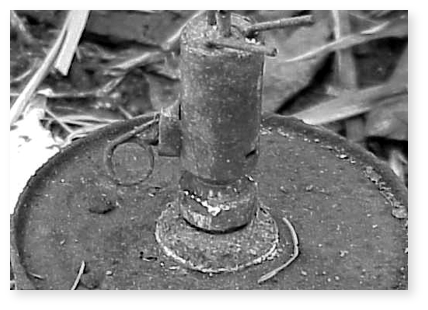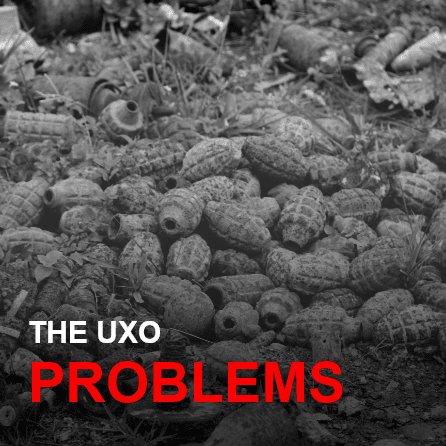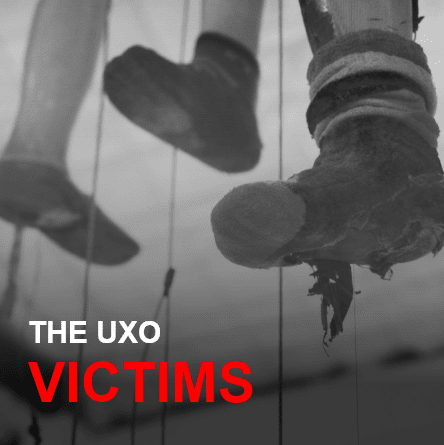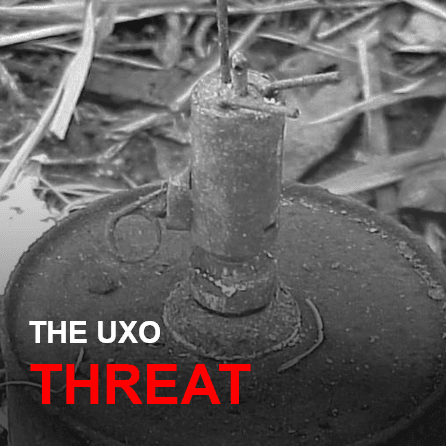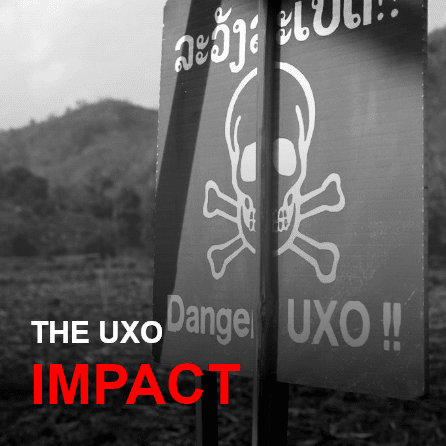The Unexploded Ordnance (UXO) Threat
For more than 4 decades after the Second Indochina War ended, approximately 30% of the unexploded ordnance still always continues threaten Lao people’s lives and society-economy. After the war ended, there still be more than 20,000 victims injured or died caused by UXO accident. UXO causes injury, death and food shortage due to its presence limits access to potentially productive land for agriculture and people are afraid to use land to earn a living, while more than 70% of Lao population principally make a living farming for income and food security. In addition, UXO also causing us to add substantial costs to processes of development in UXO contaminated areas.
While Lao PDR is still one of the poorest countries in Southeast Asia and socio-economic of Lao PDR is growing continuously, the demand for land use for agriculture, industry and infrastructures development is increasing rapidly, but one of the biggest challenges to the country’s development is UXO problem that are contaminating on large areas nationwide. Its presence currently continues hinder to sustainable development goal and national socio-economic strategic plan to develop the country to graduate from the least developed country status. A research indicates that the prevalence of poverty and food shortage are significantly correlated with UXO problem.
There are many types of unexploded ordnance that still threaten Lao people’s livelihoods as following:

Cluster Munitions (Bombies)
A cluster munition is a conventional weapon that consists of an outer canister that is designed to disperse or release smaller bombs (sub-munitions or bomblets) that weigh less than 20 kilograms
each2. These sub-munitions are known throughout the Lao PDR as ‘bombies’. The cluster munition is dropped from a plane or launched from the ground into the air, where it ejects the bombies over a wide area. Bombies have a high failure rate leaving about 30 percent unexploded and scattered across a wide area after deployment.
51% of UXO found, removed or destroyed
Land Service Ammunition
Land Service Ammunition includes a category of land-based weaponry which is commonly broken down into sub-categories of grenades, mortars, projectiles, artillery, shells and rockets.
48% of UXO found, removed or destroyed


Large Conventional Bombs
Large conventional bomb is a streamlined cylinder that consists of five major parts: an outer casing, the inner explosive materials, devices such as fins to stabilize the bomb in flight, one or more fuzes to ignite the bomb’s main charge, and mechanism for arming the fuze or preparing it to explode.
0,4% of UXO found, removed or destroyed
Land Mines
A land mine is an explosive weapon generally uses high explosive to project blast or fragmentation from a point of detonation, concealed under or on the ground and designed to destroy or disable enemy targets, ranging from combatants to vehicles and tanks, as they pass over or near it. Such a device is typically detonated automatically by way of pressure when a target steps on it or drives over it, although other detonation mechanisms are also sometimes used. A land mine may cause damage by direct blast effect, by fragments that are thrown by the blast, or by both. The use of land mines is controversial because of their potential as indiscriminate weapons. If they did not explode, they can remain dangerous many years after a conflict has ended, harming civilians and the economy.
0,4% of UXO found, removed or destroyed
